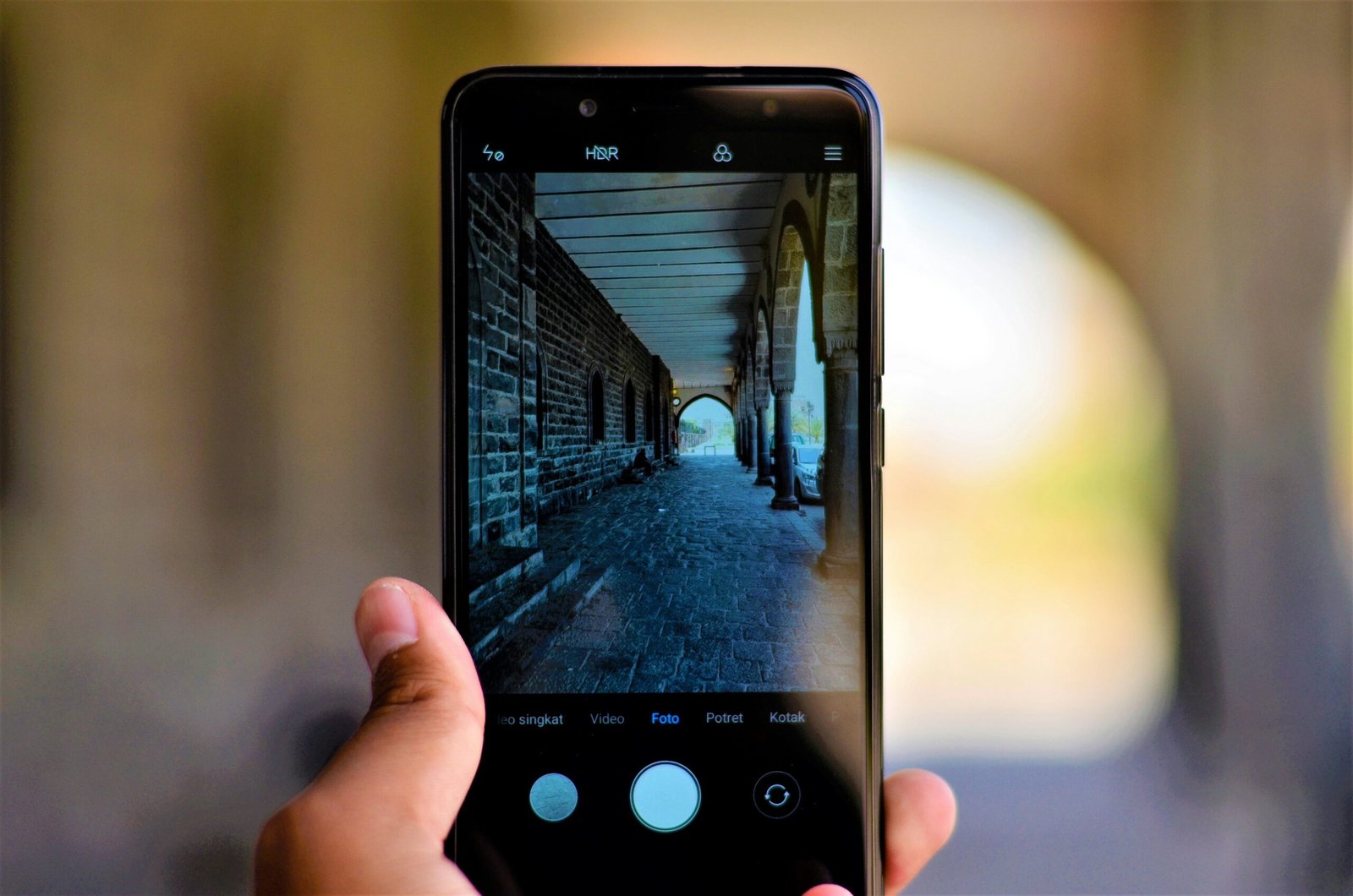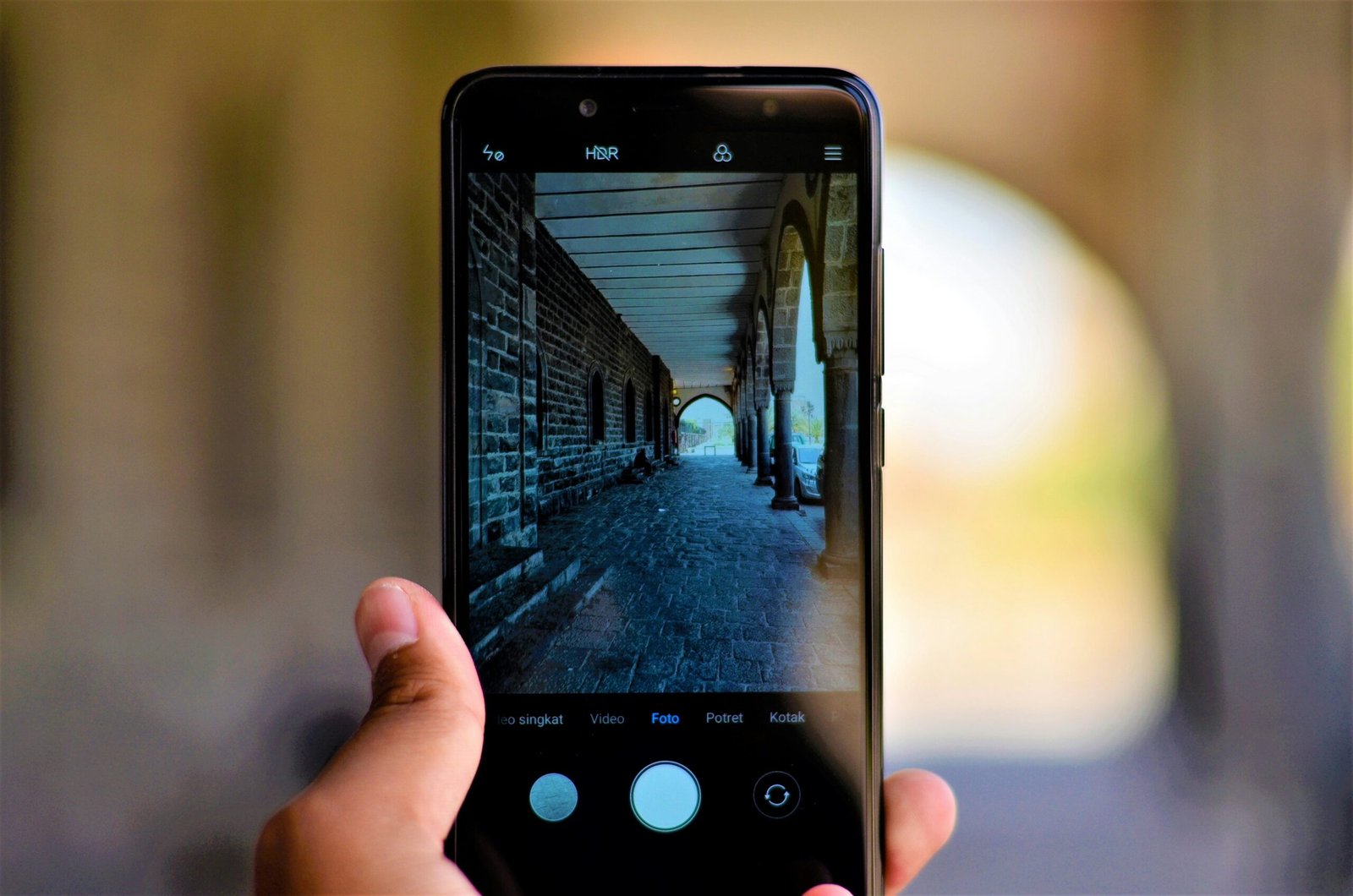
In the past few decades, we have witnessed an unprecedented surge in technological advancements that have fundamentally altered the fabric of our society. From the humble beginnings of the internet to the sophisticated artificial intelligence systems of today, technology has evolved at a breakneck pace. This evolution is not merely a progression of tools and gadgets but a transformative journey that has reshaped our daily lives, industries, and even our perceptions of reality.
At the heart of this technological revolution lies the idea that technology acts as a magical wand, capable of creating a world beyond our wildest dreams. It has become an integral part of our existence, influencing every facet of our lives from communication and healthcare to education and entertainment. The digital age has ushered in an era of connectivity and convenience, where information is at our fingertips and the barriers of time and space are virtually nonexistent.
The rapid advancement of technology can be traced back to the mid-20th century, a period marked by significant breakthroughs such as the invention of the transistor and the development of early computing machines. These innovations set the stage for the digital revolution, which gained momentum with the advent of personal computers, mobile devices, and the internet. Each leap forward has brought about profound changes, transforming the way we work, live, and interact with the world around us.
As we delve deeper into the 21st century, the pace of technological change shows no signs of slowing down. Emerging technologies such as artificial intelligence, blockchain, and quantum computing hold the promise of further revolutionizing our world. These advancements are not just incremental improvements but paradigm shifts that have the potential to redefine our future in ways we can scarcely imagine.
This blog post aims to explore the transformative impact of technology on various aspects of human life. By examining how technology has evolved and its far-reaching implications, we will gain a deeper understanding of the magical wand that is reshaping our world and creating a future filled with endless possibilities.
Technology has dramatically transformed how we communicate, ushering in an era where information exchange is nearly instantaneous and barriers of distance are virtually nonexistent. The evolution from traditional mail, which could take days or even weeks to deliver, to modern instant messaging and video calls has revolutionized our interactions on both personal and professional levels.
One of the most significant advancements in communication technology is the advent of instant messaging. Platforms such as WhatsApp, Telegram, and Messenger provide users with the ability to send and receive messages in real-time, offering unparalleled speed and convenience. This immediacy has redefined our expectations for communication, allowing for quick decision-making and more dynamic interactions.
Video conferencing tools like Zoom, Microsoft Teams, and Skype have further enhanced our ability to connect with others. These platforms enable face-to-face interactions despite geographical distances, fostering a sense of presence and engagement that traditional phone calls cannot match. This has been particularly beneficial in the professional realm, where remote work has become more prevalent, enabling teams to collaborate effectively from different parts of the world.
Social media platforms such as Facebook, Twitter, and LinkedIn have also played a pivotal role in reshaping communication. These platforms offer a space for individuals to share updates, engage in discussions, and build professional networks on a global scale. The ability to reach a vast audience almost instantaneously has transformed how we disseminate information and engage with communities.
The impact of these technological advancements on personal relationships cannot be understated. The ease of staying in touch with family and friends, no matter where they are in the world, has strengthened bonds and allowed for more meaningful connections. In professional settings, the ability to maintain constant communication has streamlined workflows and facilitated more efficient collaboration.
In conclusion, the rapid evolution of communication technology has fundamentally altered the way we interact, offering speed, convenience, and a global reach that was once unimaginable. As technology continues to advance, it will undoubtedly bring further innovations that will continue to shape our communication landscape.
Technology in Healthcare: A Miracle for Modern Medicine
The integration of technology in healthcare has revolutionized the medical field, bringing forth advancements that were once thought to be mere fantasies. Telemedicine, one of the most significant breakthroughs, allows patients to consult with healthcare professionals remotely. This innovation has drastically improved accessibility, particularly for individuals in rural or underserved areas, ensuring they receive timely care without the need to travel long distances.
Wearable health devices represent another leap forward, offering real-time health monitoring and data collection. These gadgets, such as fitness trackers and smartwatches, provide valuable insights into an individual’s physical condition, enabling both users and healthcare providers to monitor vital signs, detect anomalies, and manage chronic conditions effectively. The continuous stream of data supports proactive healthcare, potentially preventing severe health issues before they arise.
Artificial intelligence (AI) in diagnostics has also transformed the healthcare landscape. AI algorithms can analyze medical images, laboratory results, and patient histories with unprecedented accuracy and speed. This technology aids in the early detection of diseases, such as cancer, and enhances diagnostic precision, leading to better patient outcomes. Additionally, AI-driven systems can recommend personalized treatment plans based on an individual’s unique genetic makeup and health profile, paving the way for personalized medicine.
Robotic surgeries have made significant strides, offering minimally invasive procedures with greater precision and reduced recovery times. Surgeons can now perform complex operations with the aid of robotic systems, which provide enhanced dexterity and control. These advancements increase the safety and effectiveness of surgical procedures, ultimately improving patient care and satisfaction.
Collectively, these technological innovations have not only improved patient care but also increased accessibility and reduced healthcare costs. By leveraging telemedicine, wearable health devices, AI diagnostics, robotic surgeries, and personalized medicine, the healthcare industry is poised to continue its transformation, offering better outcomes and a higher quality of life for patients worldwide.
Education Transformed: The Digital Classroom
Technology has profoundly revolutionized the education sector, transforming traditional classrooms into dynamic digital learning environments. Online learning platforms, virtual classrooms, educational apps, and AI-driven personalized learning are at the forefront of this transformation. These tools have redefined how education is delivered, making it more accessible, flexible, and engaging for students globally.
Online learning platforms like Coursera, edX, and Khan Academy have democratized education, providing learners with access to a vast array of courses from prestigious institutions worldwide. Students can now learn at their own pace, from the comfort of their homes, and acquire certifications that enhance their career prospects. This flexibility caters to diverse learning needs, accommodating both full-time students and working professionals seeking to upskill.
The advent of virtual classrooms has further bridged geographical barriers, enabling real-time interaction between students and educators regardless of their physical locations. Tools such as Zoom, Microsoft Teams, and Google Classroom facilitate live lectures, discussions, and collaborative projects, fostering an interactive learning experience that mirrors the traditional classroom setting. This shift has been particularly pivotal during the COVID-19 pandemic, ensuring continuity of education amid global lockdowns.
Educational apps have emerged as powerful supplements to conventional teaching methods, offering interactive and gamified learning experiences. Platforms like Duolingo, Quizlet, and Photomath engage students through quizzes, flashcards, and step-by-step problem-solving guides, making learning more enjoyable and effective. These apps cater to various subjects and skill levels, providing personalized feedback and adapting to individual learning styles.
AI-driven personalized learning is another groundbreaking development reshaping education. Artificial intelligence analyzes student performance data to tailor educational content and recommendations, ensuring that each learner receives a customized learning experience. Platforms like DreamBox and Smart Sparrow leverage AI to identify knowledge gaps and provide targeted interventions, thereby enhancing student outcomes and fostering a deeper understanding of the material.
In summary, technology has ushered in a new era of education, characterized by greater accessibility, flexibility, and engagement. The digital classroom is not just a concept but a reality that continues to evolve, promising a future where education is more inclusive and effective than ever before.
Smart Homes and Cities: Living in a Futuristic World
The advent of smart homes and cities represents a significant leap forward in how we interact with our living environments. At the heart of this transformation is the Internet of Things (IoT), which enables everyday objects to connect and communicate over the internet. This interconnectedness, coupled with artificial intelligence (AI) and automation, is revolutionizing our living spaces, making them more efficient, secure, and comfortable.
Smart homes are equipped with a range of IoT devices designed to streamline daily activities. For instance, smart thermostats learn the temperature preferences of inhabitants and adjust settings to optimize energy usage. Similarly, smart lighting systems can be programmed to switch on and off at specific times, or respond to natural light levels, enhancing both energy efficiency and convenience. These devices not only contribute to a more sustainable living environment but also offer significant cost savings over time.
Security is another critical aspect where smart technology excels. Smart locks and surveillance systems provide enhanced protection against unauthorized access and intrusions. Homeowners can monitor their properties in real-time, receive alerts, and control security settings remotely through their smartphones. This level of control and oversight ensures peace of mind, whether at home or away.
On a larger scale, smart city initiatives aim to improve urban living through integrated technology solutions. Cities are implementing smart traffic management systems that reduce congestion and improve travel times. Public services, such as waste management and water supply, are being optimized through real-time data collection and analysis, leading to more efficient resource utilization. Environmental benefits are also notable, as smart grids and renewable energy sources reduce the carbon footprint of urban areas.
The benefits of smart homes and cities extend beyond convenience and efficiency. They foster a more sustainable lifestyle and create safer, more connected communities. As technology continues to evolve, the potential for further innovations in our living environments is boundless, promising a future where the line between the digital and physical worlds becomes increasingly seamless.
Automation and Artificial Intelligence (AI) are revolutionizing the workforce, transforming job roles, and fundamentally altering the way we work. As technology advances, traditional tasks are increasingly being handled by machines, which leads to both opportunities and challenges.
One of the most significant impacts of automation and AI is the creation of new job roles. While certain jobs may become obsolete, new roles that require different skill sets are emerging. For instance, industries such as data analysis, cybersecurity, and AI development are experiencing a surge in demand. These new opportunities often require a deep understanding of technology and specialized training, highlighting the importance of continuous learning and adaptability.
However, the rise of automation and AI also poses challenges, particularly in terms of job displacement. Many routine and repetitive tasks previously performed by humans are now being automated. This shift can lead to job losses in sectors such as manufacturing, customer service, and even transportation. Workers in these industries may find themselves at risk unless they adapt to the changing landscape.
To navigate these changes, upskilling and reskilling are crucial. Individuals must be proactive in acquiring new skills that are relevant to the evolving job market. Educational institutions and employers play a vital role in facilitating this process by providing training programs and resources to help workers transition into new roles. Embracing lifelong learning can ensure that the workforce remains competitive and capable of meeting the demands of a technology-driven economy.
In conclusion, the future of work is being shaped by automation and AI. While these technologies bring about significant changes, they also offer opportunities for growth and innovation. By focusing on upskilling and reskilling, individuals can stay relevant and thrive in this new era of work.
Entertainment and Leisure in the Digital Age
Technology has revolutionized the landscape of entertainment and leisure in ways that were once unimaginable. The advent of streaming services has significantly altered how we consume media. Platforms such as Netflix, Amazon Prime, and Disney+ offer a vast array of content at our fingertips, allowing us to watch movies, TV shows, and documentaries on-demand. This has not only changed viewing habits but also disrupted traditional broadcast television, as viewers now prioritize convenience and accessibility.
Virtual reality (VR) and augmented reality (AR) have introduced immersive experiences that were once the stuff of science fiction. VR technology, through devices like the Oculus Rift and HTC Vive, transports users into fully interactive, three-dimensional environments, enhancing gaming experiences and enabling virtual tours of far-off places. AR, on the other hand, overlays digital information onto the real world, as seen in popular applications like Pokémon GO and Google AR, enriching real-world interactions with digital elements.
The gaming industry, too, has experienced a paradigm shift due to technological advancements. Cloud gaming services like Google Stadia and Nvidia GeForce Now allow players to stream high-quality games without the need for expensive hardware. Multiplayer online games and e-sports have created global communities and professional arenas where players can compete and connect in unprecedented ways. Moreover, advancements in graphics and artificial intelligence have resulted in more realistic and engaging gaming experiences.
These technological innovations have not only transformed how we entertain ourselves but have also fostered new forms of social interaction and connectivity. Through these platforms, users can share experiences, create content, and engage with audiences worldwide. As technology continues to evolve, the future of entertainment and leisure promises to be even more dynamic and immersive, offering endless possibilities for how we consume and interact with media.
Conclusion: Embracing the Magic of Technology
In reflecting on the myriad ways technology has revolutionized our lives, it becomes evident that its transformative power is unparalleled. From the way we communicate and work to how we learn and entertain ourselves, technology has seamlessly woven itself into the fabric of our daily existence. The advancements in artificial intelligence, virtual reality, and automation, among others, have unlocked possibilities that were once confined to the realm of imagination.
As we stand on the cusp of further technological innovations, it is crucial for individuals and societies to not only embrace these changes but also to remain informed about emerging trends. Being proactive in understanding and leveraging new technologies can empower us to harness their full potential, driving progress and enhancing our quality of life.
However, with great power comes great responsibility. As we integrate technology deeper into our lives, we must also consider the ethical implications. Issues such as data privacy, cybersecurity, and the digital divide highlight the need for a balanced approach. It is imperative to ensure that technological advancements do not compromise fundamental human values and rights. By fostering a dialogue around these ethical considerations, we can aim to create a future where technology serves as a force for good, benefiting all of humanity.
Ultimately, the magic of technology lies in its ability to continually evolve and adapt, pushing the boundaries of what is possible. By embracing this magic with an informed and conscientious mindset, we can navigate the complexities of the digital age and create a world that not only meets but exceeds our wildest dreams.




